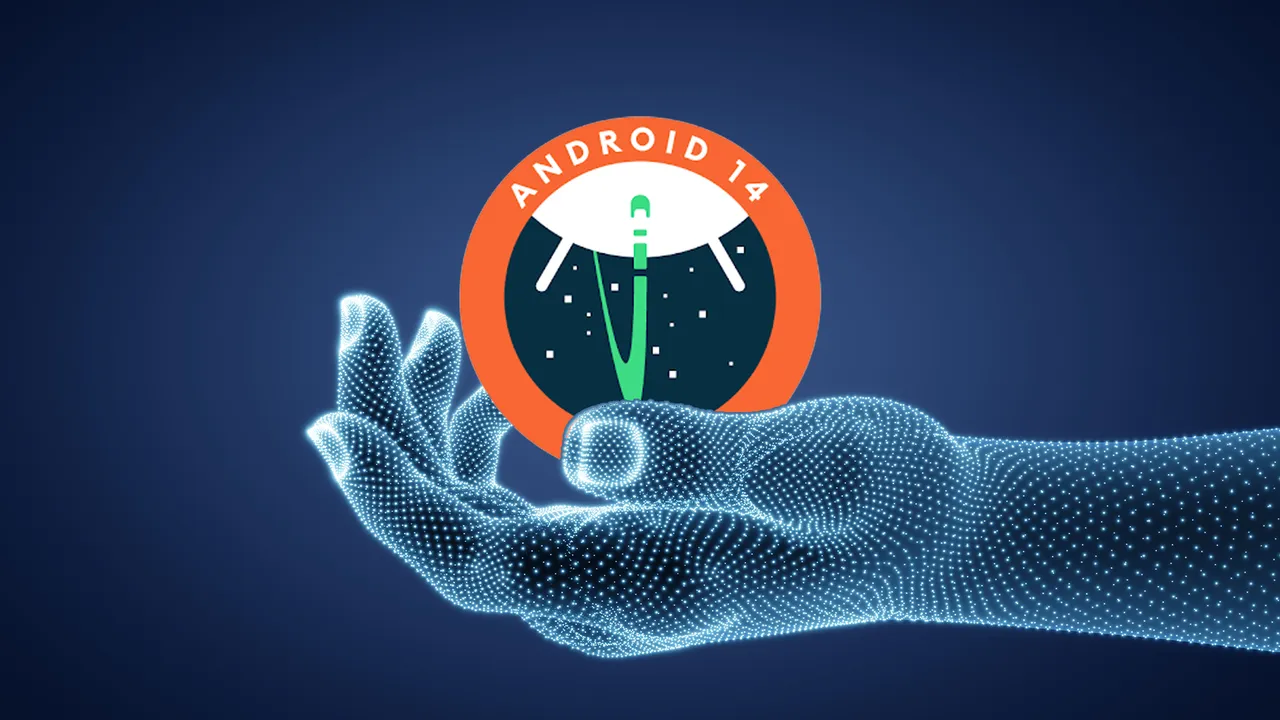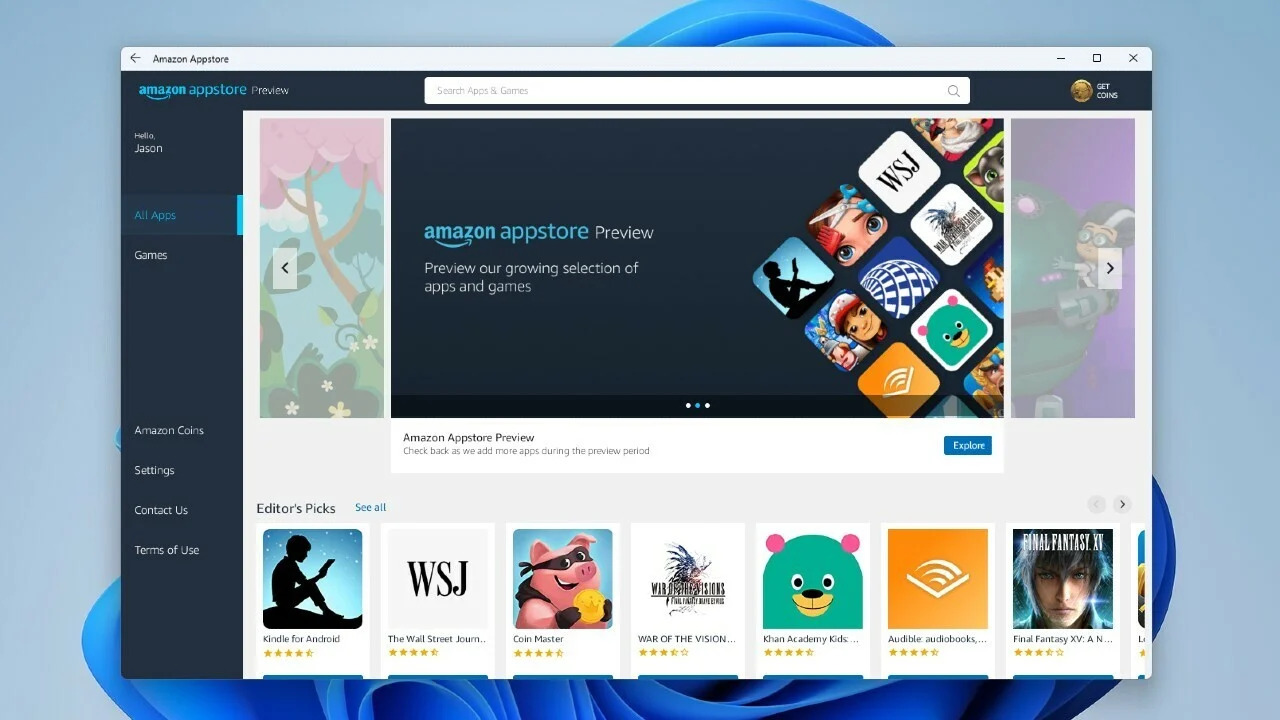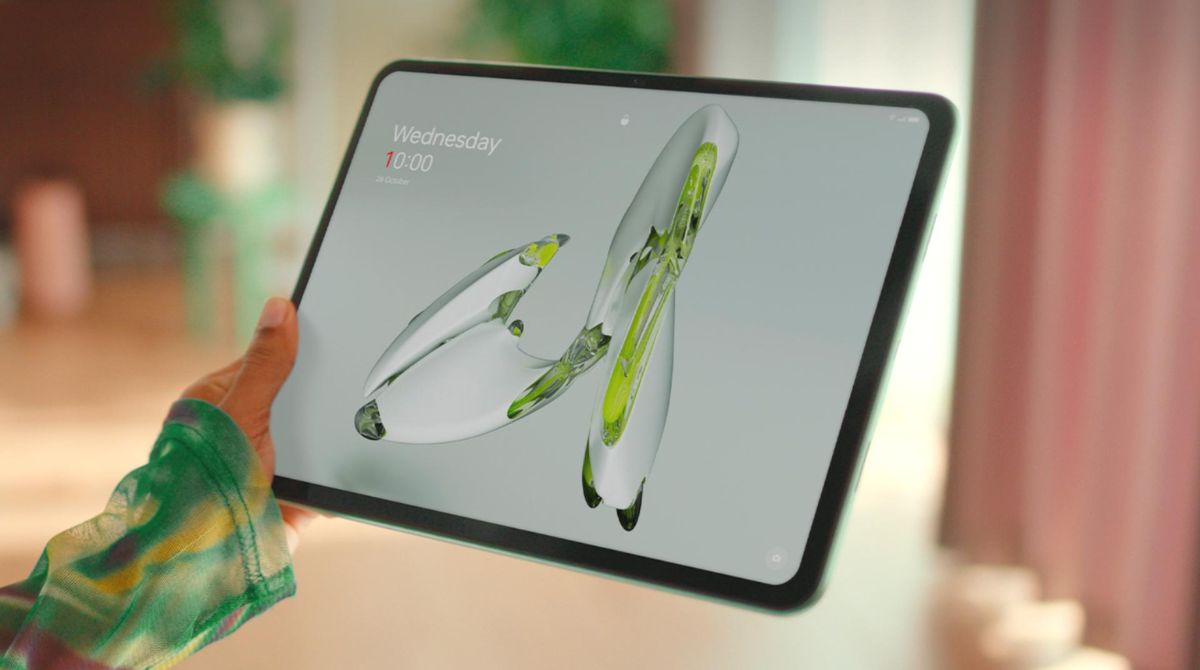Introduction
Android, the world’s most popular mobile operating system, is a sophisticated and versatile ecosystem that powers billions of devices worldwide. Created by Google, Android has revolutionized the way we use smartphones, tablets, smartwatches, and even smart TVs. But who exactly is responsible for making Android what it is today?
In this article, we will explore the key players in the Android ecosystem and their roles in shaping this powerful platform. From Google, the creator and driving force behind Android, to the open collaboration of the Open Handset Alliance, and the mobile manufacturers, chipset providers, app developers, and carrier partners that make Android devices a reality, the Android ecosystem is a result of the collective efforts of many stakeholders.
To truly understand the magnitude of Android’s success, we must first acknowledge the visionary behind it all: Google. Google’s expertise in search technology and software development enabled them to create a mobile operating system that seamlessly integrates with their suite of online services and provides users with a powerful and intuitive experience.
Next, we have the Open Handset Alliance (OHA), a consortium of technology and mobile companies that collaborate to further the development and adoption of Android. The OHA ensures that Android remains open-source, allowing any interested party to contribute to its growth and innovation.
Mobile manufacturers also play a crucial role in the Android ecosystem. Companies like Samsung, LG, and Huawei are responsible for designing and manufacturing the hardware that runs Android. Their expertise lies in creating cutting-edge devices with features and form factors that cater to the diverse needs and preferences of users worldwide.
But it’s not just the hardware that makes Android devices special; it’s the software and performance that truly sets them apart. This is where chipset providers like Qualcomm and MediaTek come in. They develop the processors, graphics cards, and other essential components that ensure smooth and efficient performance on Android devices.
Once the hardware and chipset are in place, Android device original equipment manufacturers (OEMs) step in to customize the operating system to suit their specific brand and user experience. Companies like Samsung’s TouchWiz, HTC’s Sense, and Xiaomi’s MIUI add a unique aesthetic and additional functionality to the base Android framework.
No mobile operating system would be complete without a vibrant app ecosystem, and Android is no exception. App developers play a pivotal role in creating innovative and engaging applications that make our smartphones truly smart. The Google Play Store – Android’s official app marketplace – provides a platform for developers to showcase and distribute their applications to millions of users worldwide.
Finally, we have the carrier partners who bring Android devices to consumers. These telecommunications companies work closely with device manufacturers to ensure compatibility and network connectivity. They play a vital role in providing internet connectivity and data services to Android users, enabling them to tap into the full potential of their devices.
As we delve deeper into the Android ecosystem in the following sections, we will discover the fascinating interplay between these key players and how they collectively contribute to the success and evolution of Android.
Google: The Creator of Android
When we talk about Android, we cannot overlook the pivotal role played by Google, the tech giant that brought this revolutionary mobile operating system into existence. Back in 2005, Google acquired Android Inc., a company founded by Andy Rubin, who had a vision of creating a flexible and open-source platform for mobile devices.
With Google’s vast resources and expertise in software development, they transformed Rubin’s vision into a reality. The result was Android, a powerful operating system built on the Linux kernel that would go on to dominate the smartphone market.
Google’s influence on Android can be seen in the seamless integration with their suite of online services. From Gmail and Google Maps to YouTube and Google Drive, Android devices provide users with a unified experience across multiple platforms.
But Google’s contribution to Android goes beyond just their own services. They have established the Google Play Store, which serves as the official app marketplace for Android. This platform allows users to download and install millions of apps, games, and other digital content, making Android devices incredibly versatile and customizable.
Furthermore, Google constantly enhances Android’s functionality through regular updates and new releases. These updates introduce innovative features, improve security, and enhance overall performance, ensuring that Android users always have access to the latest technology.
Additionally, Google’s influence extends to the development of hardware. They have collaborated with numerous manufacturers to create Nexus and Pixel devices, showcasing the best of what Android and Google have to offer in terms of hardware and software integration.
Google also nurtures the Android developer community. Aspiring developers can access the Android Developer Resources, which provides comprehensive documentation, API references, and development tools to help them create high-quality applications for Android.
Overall, Google’s role as the creator of Android cannot be overstated. Their vision, resources, and commitment to innovation have shaped Android into the dominant force it is today. With their ongoing support and development, Google continues to push the boundaries of what Android can achieve, ensuring that it remains the leading mobile operating system in the ever-evolving world of technology.
Open Handset Alliance: Collaboration for Android
Android is more than just a product of Google’s ingenuity; it is a result of collaboration and open-source development by the Open Handset Alliance (OHA). Formed in 2007, the OHA is a consortium of technology and mobile companies that work together to promote the growth and adoption of Android.
The OHA brings together industry leaders from various sectors, including device manufacturers, chipset providers, software companies, and telecommunications operators. The collective expertise and resources of these members contribute to the continuous evolution and success of Android.
One of the primary objectives of the OHA is to ensure that Android remains an open-source platform. This means that the source code is freely available to developers, allowing them to modify and enhance the operating system to meet their specific needs. This open nature has fostered a vibrant community of contributors who constantly provide valuable insights and improvements to Android’s development.
The OHA also plays a crucial role in standardizing Android. By collaborating with members, they establish guidelines and specifications that ensure compatibility and interoperability across different devices and hardware configurations. This standardization enables app developers to create applications that work seamlessly across a wide range of Android devices.
Furthermore, the OHA facilitates the sharing of best practices and knowledge within the Android ecosystem. Members can exchange ideas, innovations, and solutions, allowing for faster development and adoption of new features and technologies.
Another significant contribution of the OHA is promoting Android to manufacturers and carriers worldwide. Through joint marketing efforts and partnerships, the OHA helps expand the reach and popularity of Android, making it accessible to a broader audience.
The collaborative efforts of the OHA have not only strengthened Android as an operating system but have also fostered healthy competition and innovation in the mobile industry. By pooling resources and knowledge, the OHA members have created a framework for continuous improvement and advancement of Android.
Overall, the Open Handset Alliance plays a vital role in driving the growth of Android through collaboration, standardization, and knowledge sharing. Their commitment to an open and inclusive ecosystem has allowed Android to thrive and become the dominant force it is today.
Mobile Manufacturers: The Brains Behind Android Devices
In the Android ecosystem, it’s the mobile manufacturers that bring the hardware to life and create the devices that we use on a daily basis. Companies like Samsung, LG, Huawei, and Xiaomi are the brains behind the Android devices that have become an essential part of our lives.
These mobile manufacturers play a crucial role in shaping the Android experience by designing and manufacturing devices that showcase the full potential of the operating system.
Each mobile manufacturer brings their unique design philosophy, features, and innovations to their Android devices. They strive to create smartphones, tablets, and other devices with aesthetics that captivate users and functionality that enhances their daily lives.
For example, Samsung’s Galaxy series has become synonymous with high-quality displays and cutting-edge features. Their devices often introduce innovative technologies like curved displays, advanced camera systems, and stylus integration, offering users a distinctive Android experience.
Meanwhile, LG is known for pushing the boundaries of smartphone design with their G and V series, introducing unique features like dual-screen displays and modular capabilities. Their devices cater to different segments of the market, providing a range of options for Android users.
Huawei, on the other hand, focuses on delivering powerful hardware and exceptional camera capabilities. Their flagship devices from the P and Mate series offer top-of-the-line specifications and advanced photography features, making them popular choices among photography enthusiasts.
Xiaomi, known for providing value for money, offers a range of budget-friendly Android devices that pack a punch in terms of performance and features. With their MIUI software layer, they provide a customized Android experience that resonates with their dedicated fan base.
These mobile manufacturers work closely with Google to ensure that their devices meet the Android compatibility requirements. This collaboration ensures that Android runs smoothly on their devices and delivers a consistent user experience across different hardware configurations.
Moreover, mobile manufacturers contribute to the Android ecosystem by developing their unique software overlays or skins. These overlays, such as Samsung’s One UI or LG’s UX, add additional features, customization options, and visual enhancements to the base Android framework, tailoring the user experience to the manufacturer’s vision.
Ultimately, mobile manufacturers are responsible for delivering Android devices that meet the diverse needs and preferences of consumers. They leverage their expertise in hardware design, manufacturing capabilities, and software customization to create devices that showcase the full potential of the Android operating system.
Through innovation, design, and technology, mobile manufacturers continue to push the boundaries of what Android devices can achieve, providing us with a range of options that suit our individual lifestyles and preferences.
Qualcomm, MediaTek, and other Chipset Providers
Beneath the sleek exteriors of Android devices lies the technology that powers them – the chipset. Chipset providers like Qualcomm, MediaTek, and others play a critical role in ensuring that Android devices deliver optimal performance and functionality.
Qualcomm, a leading chipset provider, has been at the forefront of mobile innovation for years. Their Snapdragon series of chipsets power a wide range of Android devices, from entry-level smartphones to flagship models. Snapdragon chipsets offer a powerful combination of processing power, graphics capabilities, and modem technology, enabling smooth performance and seamless connectivity.
Mediatek, another key player in the chipset market, focuses on providing affordable yet dependable chipsets for Android devices. Their Helio series offers a range of options for device manufacturers, balancing performance and cost-effectiveness. MediaTek’s chipsets often target emerging markets, where affordability and value for money are paramount.
Other chipset providers, such as Samsung’s Exynos, Huawei’s Kirin, and Google’s own Tensor chipset, also contribute to the Android ecosystem. These chipset providers offer unique features, optimizations, and integration with their respective hardware and software platforms, enhancing the overall Android experience for users.
Chipset providers are responsible for developing the processors, graphics cards, and other essential components that enable Android devices to handle complex tasks, run demanding applications, and provide a smooth user experience. They constantly innovate to improve power efficiency, thermal performance, and processing capabilities, ensuring that Android devices keep up with the demands of modern technology.
Furthermore, chipset providers work closely with device manufacturers and software developers to optimize their chipsets for specific devices and applications. This collaboration ensures that Android devices deliver an optimized performance, striking a balance between power consumption and processing power.
Another crucial aspect of chipset providers’ contribution is in network connectivity. Through the integration of modems and wireless communication technologies, they enable Android devices to connect to cellular networks, Wi-Fi, and other wireless protocols. This connectivity is vital for accessing online services, making calls, browsing the internet, and using a myriad of apps and services on Android devices.
Ultimately, the role of chipset providers is to equip Android devices with the necessary hardware capabilities to deliver a seamless and enjoyable user experience. Their constant innovation and collaboration with device manufacturers help advance the Android ecosystem, driving improvements in performance, connectivity, and overall device capabilities.
Android Device OEMs: Customizing Android for Users
Android’s versatility as an operating system lies in its ability to be customized and personalized to suit the diverse needs and preferences of users. This customization is made possible by Android device original equipment manufacturers (OEMs), who tailor the software experience and hardware design to create unique Android devices.
Android device OEMs, such as Samsung, LG, HTC, and OnePlus, play a critical role in shaping the user experience of Android devices. They take the base Android framework and add their own customizations, features, and user interfaces to create a distinct identity for their devices.
One of the ways OEMs customize Android is through software overlays or skins. These overlays, like Samsung’s One UI, HTC’s Sense, or OnePlus’ OxygenOS, provide a unique visual design, additional functionality, and advanced customization options that differentiate their devices from stock Android. The overlays often incorporate features specific to the OEM’s devices, such as multi-window functionality, advanced camera modes, or gesture-based navigation.
In addition to software customization, OEMs also enhance the user experience through hardware design and features. They differentiate their devices by incorporating innovative technologies, such as edge-to-edge displays, dual-screen setups, or unique camera configurations. These hardware advancements not only improve aesthetics but also deliver enhanced functionality and user experience.
Furthermore, OEMs strive to optimize Android for their devices, ensuring that the software and hardware work seamlessly together. They fine-tune performance and power efficiency, as well as optimize features specific to their devices. This optimization ensures that users have a smooth and efficient experience on their Android devices, even when running intensive applications or multitasking.
OEMs also contribute to the Android ecosystem by providing regular software updates to their devices. These updates bring security patches, bug fixes, and new features to improve the stability and functionality of Android devices. OEMs collaborate with Google and other partners to ensure that their devices are up to date with the latest Android enhancements and security measures.
Moreover, Android device OEMs actively engage with their user communities, gathering feedback and incorporating user requests and preferences into future updates and device designs. This user-centric approach allows OEMs to deliver devices that cater to the specific needs and desires of their user base.
The customization and unique features offered by Android device OEMs provide users with a wide range of choices and options. Whether it’s a device designed for photography enthusiasts, gamers, or productivity-focused users, Android device OEMs strive to create devices that meet the demands and aspirations of different user segments.
Overall, Android device OEMs play a crucial role in the Android ecosystem by customizing the software experience, enhancing hardware capabilities, and shaping the overall user experience. Their contributions ensure that Android devices offer a personalized and diverse range of options to users worldwide.
App Developers: Bringing Life to Android
Behind the success of Android lies a vast and vibrant ecosystem of applications that bring life to the platform. These applications are created by app developers who play a pivotal role in shaping the user experience and expanding the capabilities of Android devices.
App developers are responsible for harnessing the power of Android’s open-source nature and extensive development tools to create innovative and engaging applications. From utility apps to social media platforms, gaming experiences to productivity tools, app developers bring a wide range of functionalities and experiences to Android users.
One of the key strengths of Android is the Google Play Store, the official app marketplace that offers millions of apps to users. App developers leverage this platform to showcase their creations and make them accessible to a global audience.
These developers employ various programming languages, such as Java and Kotlin, to build the core functionality of their apps. They also utilize the Android Software Development Kit (SDK), which provides a set of tools and resources for creating, testing, and optimizing Android applications.
App developers go through a rigorous process of designing, coding, and testing their applications to ensure they are stable, secure, and provide a seamless user experience. They focus on creating intuitive user interfaces, responsive design, and efficient performance to enhance the overall satisfaction of Android users.
Furthermore, app developers harness the capabilities of the Android platform to provide a range of features and functionalities. They incorporate technologies like GPS, camera access, sensors, and cloud services to create applications that are interactive, location-aware, and data-driven.
App developers also play a crucial role in driving innovation on Android. They constantly seek to push the boundaries of what is possible, experimenting with new ideas, and creating groundbreaking applications that leverage the latest technologies and trends.
Moreover, app developers contribute to the Android ecosystem through their support and collaboration with device manufacturers and platform providers. They work closely with OEMs to optimize their apps for specific devices, ensuring compatibility and seamless integration.
To foster a thriving app developer community, Google provides resources and support through the Android Developer website. Developers can access documentation, code samples, and tutorials to enhance their skills and knowledge. They can also receive guidance on best practices, design principles, and app monetization strategies.
Overall, app developers are the driving force behind Android’s vast array of applications. Their creativity, technical expertise, and commitment to excellence bring life to Android devices, empowering users with a wealth of options and experiences that cater to their unique needs and preferences.
Carrier Partners: Connecting Android to Networks
While the hardware and software components of Android devices are essential, they are rendered incomplete without the crucial role played by carrier partners. These telecommunications companies play a vital role in connecting Android devices to mobile networks, ensuring seamless connectivity and access to a wide range of services and features.
Carrier partners collaborate with Android device manufacturers to certify and integrate their devices into their network infrastructure. As a result, Android devices can connect to cellular networks, browse the internet, make calls, and send text messages.
Carrier partners work closely with OEMs to ensure that Android devices are optimized for their networks. This includes testing and integrating necessary network-specific configurations and settings to enable smooth communication between the device and the carrier’s infrastructure.
Additionally, carrier partners provide Android devices with access to various network-dependent services, such as voice over LTE (VoLTE), Wi-Fi calling, and mobile data services. These services enhance the user experience by providing reliable voice calls, improved call quality, and seamless transitions between cellular and Wi-Fi networks.
Carrier partners also collaborate with Android OEMs to enable features like visual voicemail, Wi-Fi hotspots, and mobile data roaming. These features enhance the functionality of Android devices and provide users with a seamless connectivity experience wherever they go.
Furthermore, carrier partners play a key role in distributing, activating, and supporting Android devices. They offer subsidies, installment plans, and contract options to make these devices affordable and accessible to consumers. Carrier stores serve as retail outlets where users can purchase Android devices, receive support, and set up service plans.
Carrier partners are also instrumental in providing data plans and packages tailored to Android users’ needs. They offer a variety of options, including unlimited data, shared data plans, and data add-ons, providing flexibility and choice to Android users based on their data consumption habits and budget.
Moreover, carrier partners collaborate with Android OEMs to ensure timely delivery of software updates. They provide support and resources to facilitate the testing and distribution of updates, ensuring that Android devices receive the latest features, performance improvements, and security patches.
Carrier partners are essential for enabling features like HD voice calling, video calling, and messaging services specific to Android devices. Collaborating with OEMs and Google, they continually innovate to provide enhanced communication services to Android users.
In summary, carrier partners are vital in connecting Android devices to mobile networks, enabling access to voice, data, and messaging services. Their collaborative efforts with Android OEMs and network infrastructure providers ensure a seamless connectivity experience, providing users with the ability to communicate and access online services wherever they are.
Conclusion
The Android ecosystem is a vibrant and dynamic landscape, shaped by the collaboration and contributions of various key players. Google, as the creator of Android, has provided the foundation for an operating system that revolutionized the mobile industry. With its open-source nature, Android has attracted the participation of the Open Handset Alliance, a consortium of technology and mobile companies dedicated to its growth and development.
Mobile manufacturers have played a crucial role in bringing Android to life through innovative hardware designs and customization of the operating system to suit their unique brand identities. Chipset providers like Qualcomm and MediaTek have ensured that Android devices deliver optimal performance and connectivity, while app developers have created a vast array of applications that have enriched the user experience and expanded the capabilities of Android devices.
Furthermore, carrier partners have played a vital role in connecting Android devices to mobile networks, ensuring seamless connectivity and network-dependent services for users. Through their collaboration with OEMs, carrier partners enable Android users to make calls, access the internet, and enjoy various network-dependent features.
In conclusion, the success of Android as the world’s most popular mobile operating system can be attributed to the collective efforts of Google, the Open Handset Alliance, mobile manufacturers, chipset providers, app developers, and carrier partners. This collaborative ecosystem has led to the continuous innovation, customization, and improvement of Android, providing users with a diverse range of devices, applications, and services.
As the Android ecosystem continues to evolve, these key players will continue to shape its future by pushing boundaries, introducing new technologies, and enhancing the user experience. Together, they contribute to Android’s ongoing success as a versatile, innovative, and user-centric platform that powers billions of devices worldwide.

























